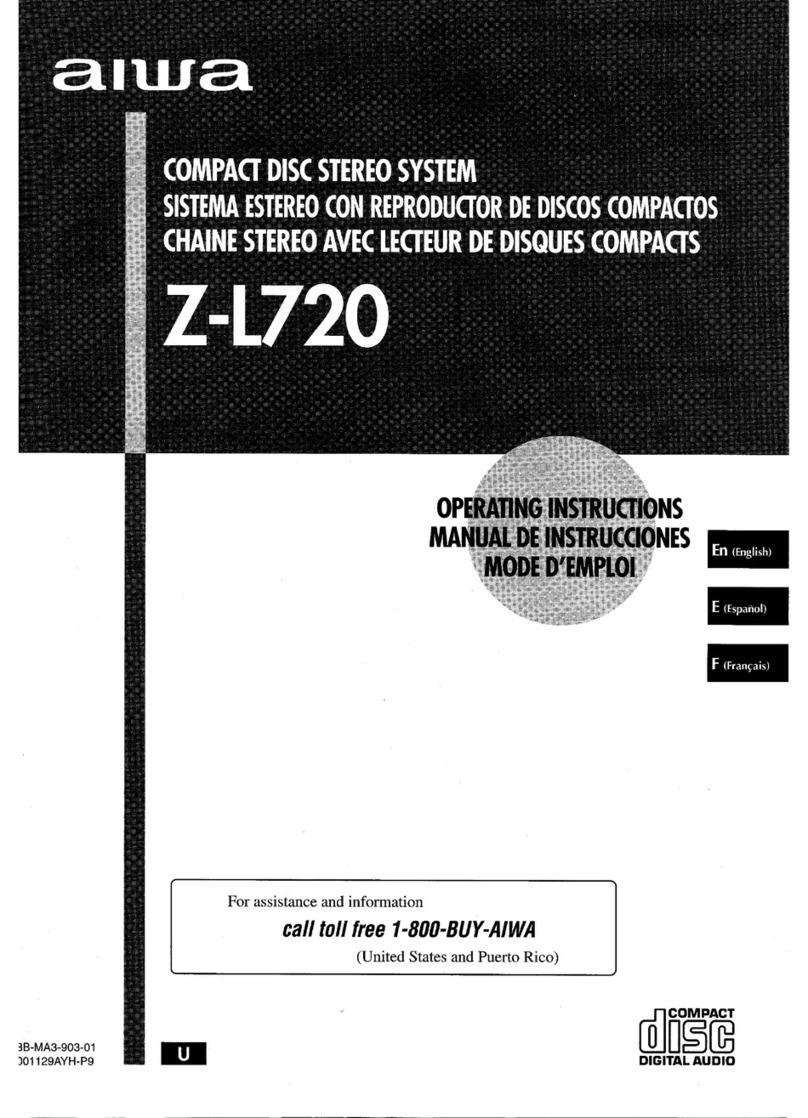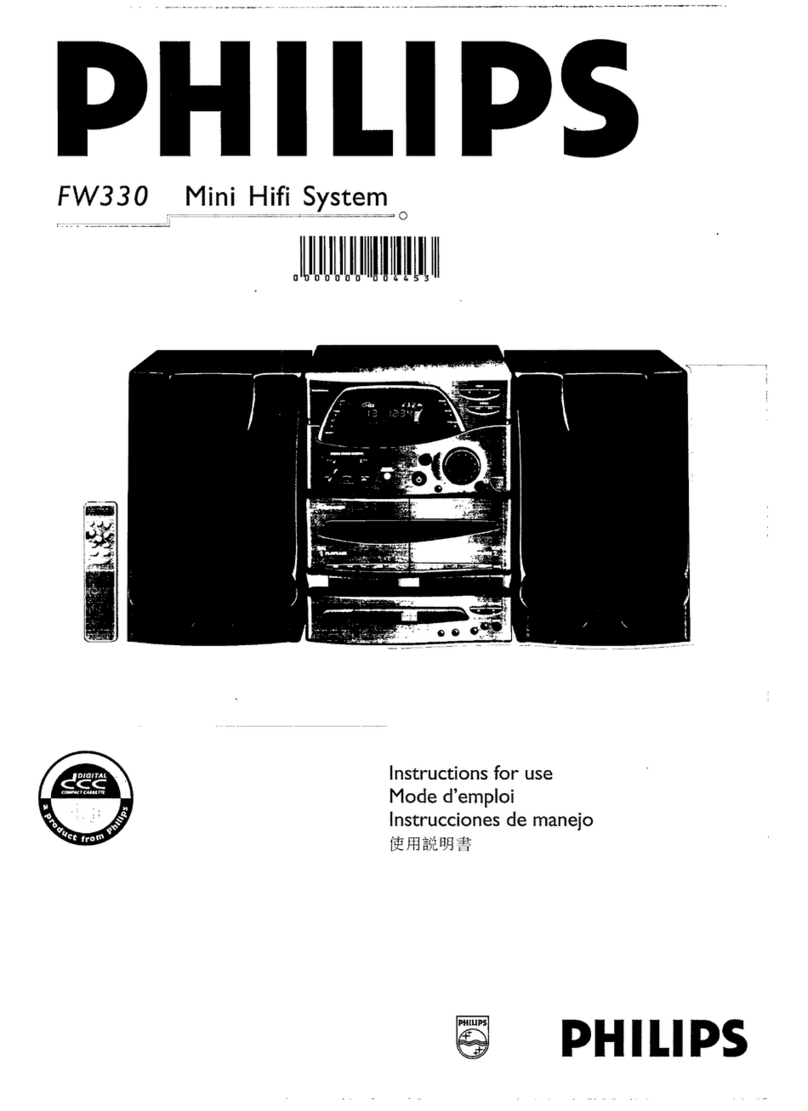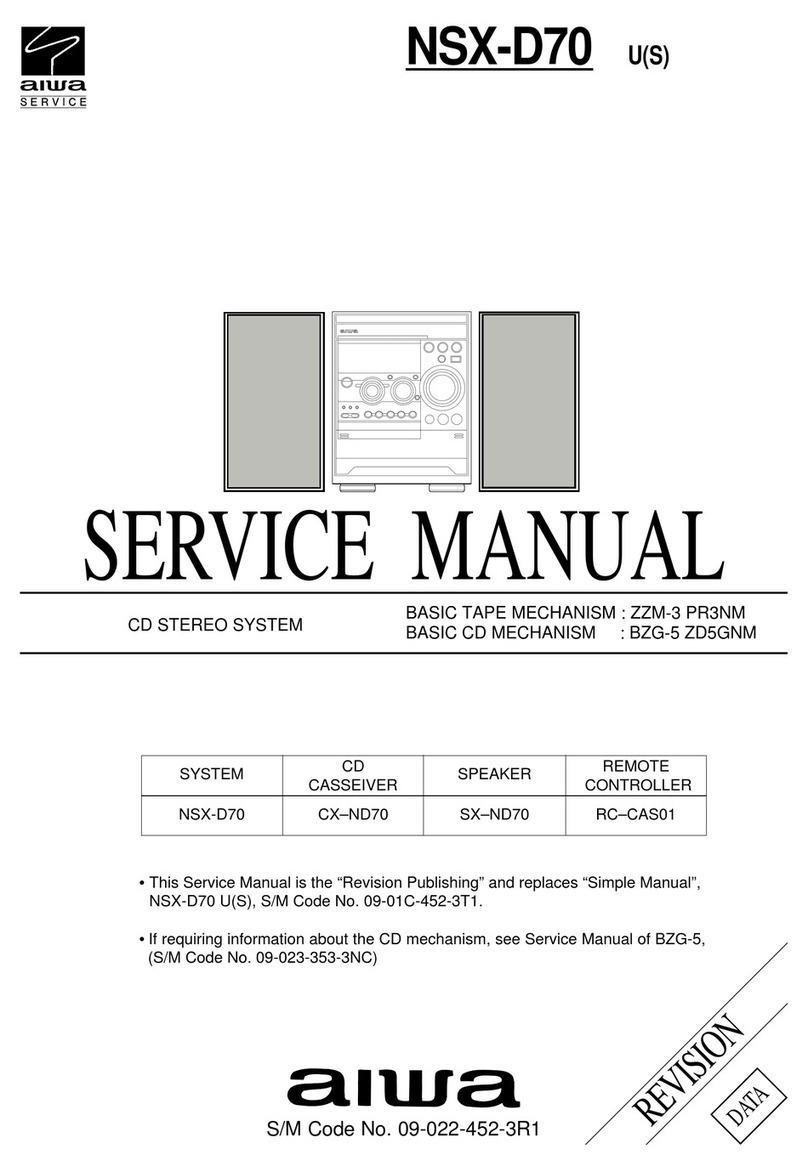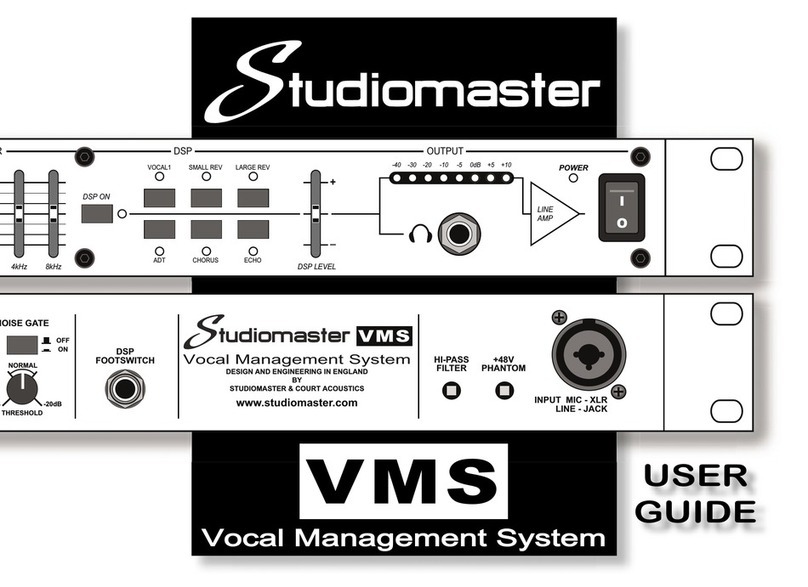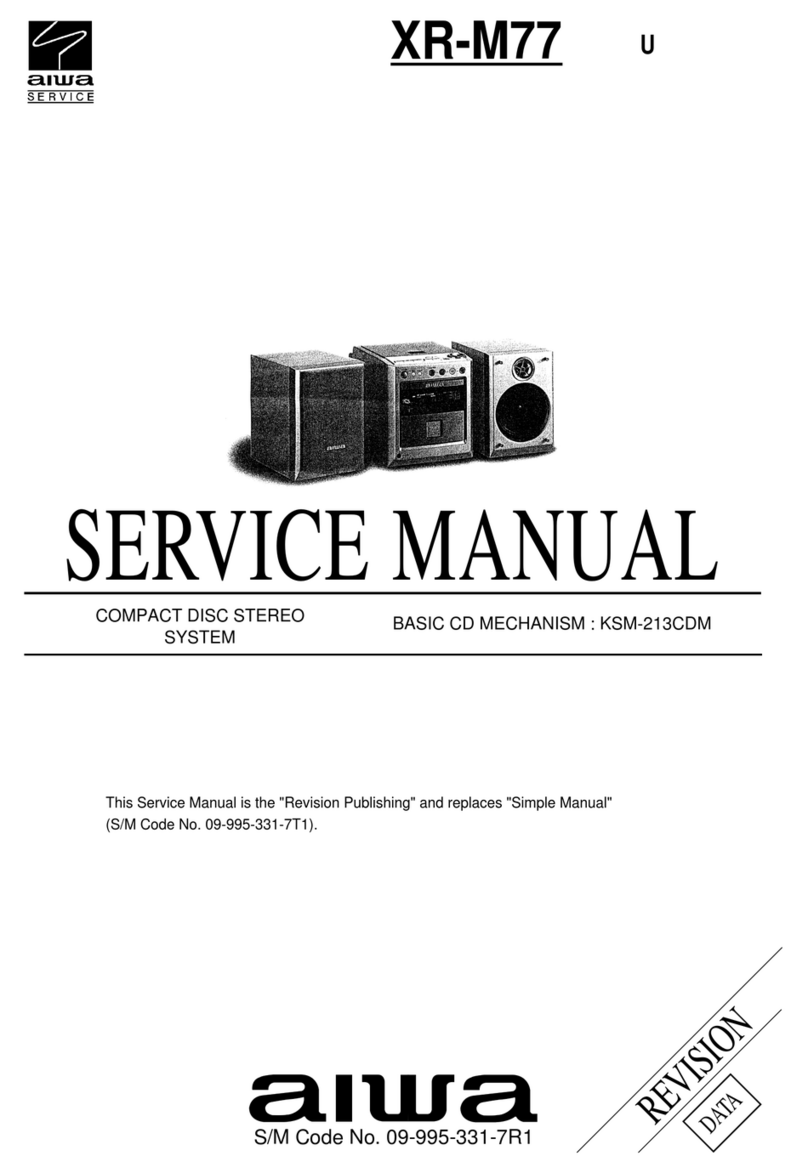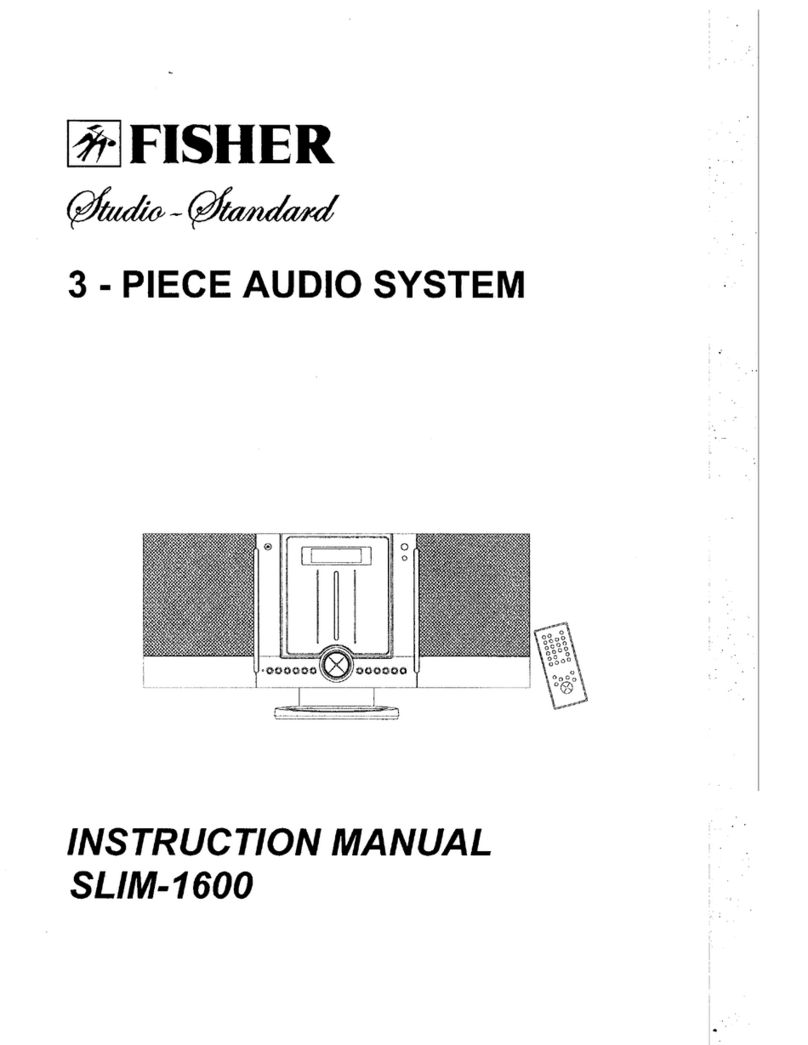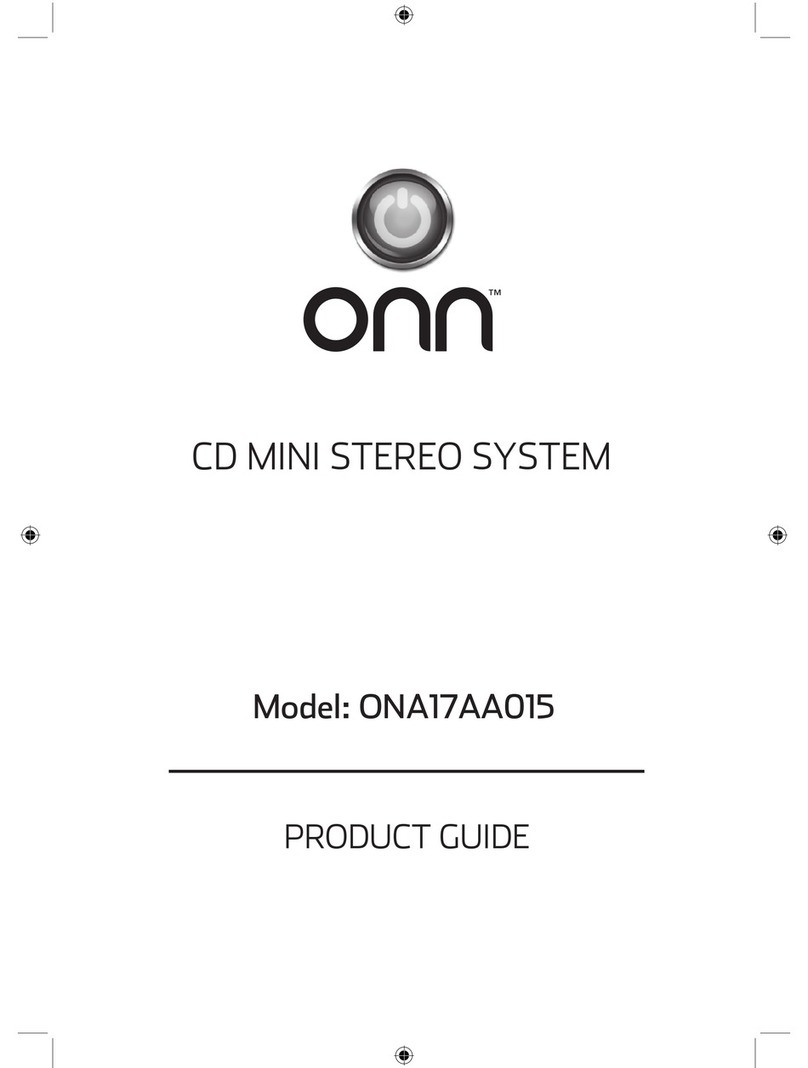Pfannenberg PA 10 Assembly instructions

985 501 002 1
PA 10/20 PA X 10-10/ PA X 10-15 PA X 20-10/ PA X 20-15
Betriebs- und Montageanleitung
Maße
Technische Daten
PA 10 PA 20 PA X 10-10 PA X 10-15 PA X 20-10 PA X 20-15
Nennschallpegel 110dB (A) 1m
120dB (A) 1m
110dB (A) 1m 120dB (A) 1m
Lautstärkeregelung -10dB -9dB -10dB -9dB
Töne 80
Blitzenergie - 10J 15J 10J 15J
Blitzfolgefrequenz - 1Hz
Bemessungs-
Spannung
(Begrenzungen
siehe Zulassungen)
24 V DC oder
12-48V DC
24V AC
110 –
240 V AC
50/60 Hz
24 V DC
oder
12
-
48V DC
24V AC
110
–
240 V AC
50/60 Hz
12V DC
24V DC
48V DC
24V AC
115V AC
230V AC
12V DC
24V DC
48V DC
24V AC
115V AC
230V AC
12V DC
24V DC
48V DC
24V AC
115V AC
230V AC
12V DC
24V DC
48V DC
24V AC
115V AC
230V AC
Spannungsbereich
10 – 60 V
20 – 30V
95 - 265 V
10 – 60 V
20 – 30V
95 – 265V
10,5 – 15 V
18V – 30V
40V – 60V
20 – 30V
95V – 127V
195V – 253V
10,5 – 15 V
18V – 30V
40V – 60V
20 – 30V
95V – 127V
195V – 253V
10,5 – 15 V
18V – 30V
40V – 60V
20 – 30V
95V – 127V
195V – 253V
10,5 – 15 V
18V – 30V
40V – 60V
20 – 30V
95V – 127V
195V – 253V
Stromaufnahme
Schallgeber (max.)
[mA]
24V: 360
485
850
140
24V: 800
880
1600
330
490
360
230
850
150
100
490
360
230
850
150
100
460
800
500
1600
330
200
460
800
500
1600
330
200
Stromaufnahme
Blitzleuchte (max.)
[mA]
–
–
–
–
–
–
1400
680
300
1400
300
160
1550
850
440
1400
330
220
1400
680
300
1400
300
160
1550
850
440
1400
330
220
Leistungsaufnahme
24V: 8,5 W
12-48V: 9W
17,5 VA
15,5 VA
24V: 24,5 W
12-48V: 27W
17,5 VA
50 VA
22 W
22 W
32 W
54,5 VA
34,5 VA
40,5 VA
29 W
27,5 W
32,5 W
57 VA
45 VA
65,5 VA
27,5 W
38 W
50,5 W
80 VA
62,5 VA
72 VA
35 W
43,5 W
51 W
82,5 VA
72,5 VA
97 VA
Einschaltdauer 100%
Anschlussklemmen 0,14 - 2,5mm² feindrähtig / AWG24 - AWG 14 (stranded)
Schutzart IP66 (EN60529), Type 4 & 4x
Schutzklasse II
Betriebstemperatur -40°C…+55°C
Lagertemperatur -40°C…+70°C
Max. rel.Luftfeuchte
90%
Kabeleinführung 7x M20 vorgeprägt 5x M20 vorgeprägt
Dichtbereich der
Durchführungstülle 7 – 13 mm Bei Verwendung von Kabeldurchmessern < 7 mm ist eine Kabelverschraubung
mit ausreichender Schutzart vorzusehen
Gehäusematerial PC/ABS Blend
Haubenmaterial PC
Einbaulage beliebig
Optionen -SSM, (siehe Seite 5)
Zubehör Plombierstopfen (Art-Nr. 28300000002)
Haubenfarben - klar, weiß, gelb, orange, rot, grün, blau
Kartoninhalt:
1x Alarmgerät
1x Membrannippel M20
1x Betriebsanleitung
1x Widerstand (nur –SSM)
214 [8.44"]
26 [1.02"]
190 [7.48"]
37 [1.46"]
L
37 [1.46"]
170 [6.69"]
Prepared M20 cut-out
M20-Ausbruch vorbereitet/
Ø9 [0.35"]
L
L
26 [1.02"]
100 [3.94"]
170 [6.69"]
Ø9 [0.35"]
214 [8.44"]
190 [7.48"]
270 [10.63"]
37 [1.46"]
35.4
[1.39"]
89.4 [3.52"]
35.4
[1.39"]
86 [3.39"]
86 [3.39"]
60 [2.36"]
70.7 [2.78"]
64.2 [2.53"]
55 [2.17"]
Bohrbild im Inneren
des Gehäuses
PA 10/ PA 20
PA X 10
-
10/ PA X 10
-
15
PA X 20-10/ PA X 20-15

985 501 002 2
Zulassungen
Zulassungen
(gilt für gekennzeichnete Betriebsmittel)
PA10/ PA 20, 110-230V AC: PA10/ PA 20, 24-48V DC: PA10-SSM, PA 20-SSM:
VdS 0786-CPD- 21184 VdS 0786-CPD- 21223 0786-CPD- 21224
Bauproduktenrichtlinie
(89/106/EWG)
PA 10/ PA 20
Optionen –SSM
Bemessungsspannung 24 -48 V DC 110V – 240V AC
Spannungsbereich
gemäß EN54-3 18V – 60V
Option: -SSM: 18V – 30V 95V – 265V AC
Ton 2
15
60
104
131
146
konform zur Bauproduktenrichtlinie (89/106/EWG)
1200Hz-500Hz (Sägezahn/ Saw tooth) DIN/PFEER P.T.A.P.
500Hz-1200Hz (Ansteigender Ton/ Slow whoop)
825Hz (Dauerton/ Continuous)
660Hz (Unterbrochener Ton/ Intermittent)
800Hz/ 1000Hz (Wechselton/ Alternating)
544Hz/ 440Hz (NF S 32-001)
Signalisierungsbereich EN54-3: siehe Dokumente
30305-005-1 (PA 10) und 30306-005-1 (PA 20)
Umweltschutzklasse Typ B
Die Prüfung erfolgte unter Verwendung des mitgelieferten Membrannippels und der äußeren Befesti-
gungsbohrungen.
PA10/ PA 20, 110 – 230V AC: PA10/ PA 20, 24 - 48V DC: PA10-SSM, PA 20-SSM:
G212116 G212191 G212192
VdS
Daten siehe Bauproduktenrichtlinie (89/106/EWG)
GL GLxxxxx (in Vorbereitung)
Umweltkategorie C, H, EMC1
UL, cUL UCST, UCST7, ULSZ, ULSZ7, UEES, UEES7 (weiterführende Informationen siehe Seite 7)
Inbetriebnahme
Sicherheitshinweise:
- Der elektrische Anschluss darf nur von hierfür autorisierten Personen in Übereinstimmung mit den derzeit gültigen Vor-
schriften durchgeführt werden.
- Warnung vor gefährlicher hoher elektrischer Spannung.
- Vor dem Öffnen ist sicherzustellen, dass das Gerät nicht unter Spannung steht.
- Vor Inbetriebnahme ist die auf dem Typenschild angegebene Versorgungsspannung zu kontrollieren. Eine falsche Be-
triebsspannung kann zur Schädigung bzw. zur Zerstörung des Betriebsmittels führen.
- Bei der Installation ist darauf zu achten, dass die Anschlussleitung gegen Zug und Verdrehen abgesichert ist. Bitte beach-
ten: Die Geräte sind nicht für einen ortsveränderlichen Einsatz bestimmt.
- WARNUNG: Bei Installation Verdrahtung entfernt von scharfen Kanten, Ecken und internen Komponenten.
- Die Öffnung des Schalltrichters darf insbesondere bei Verwendung im Außenbereich oder in staubreicher Umgebung nicht
nach oben zeigen.
- Die Funktion des Gerätes ist nur gewährleistet, wenn Ober- und Unterteil korrekt zusammengefügt sind.
Bei Verwendung der Kombination mit der Leuchte (PA X 10-10; PA X 10-15; PA X 20-10; PA X 20-15):
- Um eine Beeinträchtigung des Sehvermögens zu verhindern, ist der dauernde, direkte Blick in die aktivierte Leuchte zu
vermeiden.
Öffnen des Gehäuses: Verschließen des Gehäuses
3/8
1. 2.
3/8
1. 2.
Das Gerät wird in nicht verschlossenem Zustand ausgeliefert.
Plombierstopfen für die Gehäuseschrauben sind als Zubehör erhältlich.
Kabeldurchführungen
Zur Sicherstellung der angegebenen Schutzart
sind an den dafür vorgesehenen Durchbrü-
chen Kabeldurchführungen mit einer Schutzart
von IP 66 zu montieren. Der mitgelieferte
Membrannippel kann durch eine Kabelver-
schraubung oder durch einen M12-
Steckverbinder mit einem Flanschmaß von
M20 ersetzt werden.
Durch Lösen der vier
Deckelschrauben lässt
sich das Oberteil ab-
nehmen:
Verschließen des Gehäuses
durch Drehen der Deckel-
schrauben in die Endstellung
bis zur Verrastung.
Kabelverschraubung
(mitgeliefert)
Membrannippel IP 66
Nach Montage des Kabels
Reste der Membrane entfernen.
IP 66
M12- Steckverbinder IP 66
(für Low Voltage -Geräte)

985 501 002 3
Anschlussplatine im Unterteil:
Elektrischer Anschluss und Tonauswahl durch externe Ansteuerung C1 und C2
Betriebsspannungsanschluss Schallgeber:
-L
Betriebsspannungs-
+N
X2
anschluss
+N -L
C2
C1
C2 C1
Betriebsspannungsanschluss Schallgeber-Blitzleuchten-Kombination:
X3
X4
X2
Schallgeber und Blitzleuchte
anschluss
Betriebsspannungs-
+N -L
+N -L +N -L
C2
C1
C2 C1
Stecker von der Blitzleuchtenplatine
X2
anschluss für Blitzleuchte:
Betriebsspannungs-
DC:
AC:
+
X3
X4
L
N
+N -L
+N -L -L
+N
C2
C1
C2 C1
Stecker von der Blitzleuchtenplatine
anschluss für Schallgeber
Betriebsspannungs-
Gemeinsamer Anschluss von getrennter Anschluss von
Blitzleuchte und Schallgeber Blitzleuchte und Schallgeber
(Auslieferungszustand)
Der gewünschte Ton kann mithilfe des Tonartenschalters S3 (auf der Treiberplatine im Oberteil) ausgewählt werden.
Die möglichen Töne sind in der Tonartentabelle im Anhang beschrieben.
Nach Anlegen der Versorgungsspannung wird der Ton erzeugt.
Schallgeber-Treiberplatine (im Oberteil):
DC AC
S2
Tonartenschalter
Lautstärkeregler
(Überbrückung
Hinweis:
Um EN54-3 konform zu sein, muss sich
der Lautstärkeregler in der
folgenden Position befinden:
S3
S3
S2
(Auswahl der Polarität der
Steuerspannung für C1 und C2)
S1
+
Werkseinstellung
+-
+
-
mit Verpolungsschutz
(with rectifier)
Werkseinstellung
ohne Verpolungsschutz
(without rectifier)
Verpolungsschutzdiode)
Tonartenschalter
PA 10: in Maximalposition
PA 20: in der werksmäßig eingestellten
und gesicherten Position

985 501 002 4
Änderung der Töne durch externe Ansteuerung
Für Anwendungen, die zusätzlich zum Grundton weitere Töne benötigen, besteht die Möglichkeit, bis zu drei weitere
Tonarten mithilfe der folgenden elektrischen Ansteuerungen zu erreichen.
Grundsätzlich wird erst der gewünschte Grundton ♪(siehe Tonartentabelle im Anhang) mit dem Tonartenschalter S3
auf der Treiberplatine eingestellt. Die korrespondierenden zusätzlichen Töne (C1, C2, C1+C2) sind der Tabelle „An-
steuerung der Töne“ im Anhang zu entnehmen.
Tonstufenauswahl durch Steuereingang (TAS)
DC-Version:
Bei polrichtiger Anwendung erfolgt die Tonauswahl über die
Steuereingänge C1 und C2 auf der Anschlussplatine. Die
Versorgungsspannung muss dabei immer zusammen mit
den Steuereingängen angelegt werden. Schalter S2 auf der
Treiberplatine ist in der Stellung mit
Verpolungsschutz (with rectifier).
Über den Schalter S1 auf der Treiberplatine erfolgt die
Auswahl der Polarität der Steuerspannung („+“ oder „–“).
„+“: positive Ansteuerung
„-„: negative Ansteuerung (Werkseinstellung)
Achtung: Ist die Steuerspannung größer als die Versorgungs-
spannung oder die Versorgungsspannung liegt nicht an, erfolgt
die Betriebsstromversorgung über die Steuereingänge. Eine
entsprechende Belastbarkeit muss dann gewährleistet sein.
AC-Version:
In der AC-Version erfolgt die Tonauswahl durch Anschließen
der Phase „L“ der Versorgungsspannung an die Steuerein-
gänge C1 bzw. C2.
Die Versorgungsspannung muss dabei immer zusammen mit
den Steuereingängen angelegt werden.
Tonstufenauswahl durch Versorgung über Steuereingang (TAV) - für alle DC-Versionen
Der Schallgeber kann über die Steuereingänge C1 bzw. C2 auf der Anschlussplatine mit Betriebsspannung versorgt
werden. Versorgung und Tonstufenauswahl erfolgt somit gleichzeitig.
Der Minuspol des Schallgebers muss angeschlossen sein.Durch Anschließen der positiven Spannung an den Pluspol
der Anschlussplatine wird der Grundton (♪) erzeugt; durch Anschluss an C1 bzw. C2 wird die entsprechende Tonstufe
ausgewählt.
Durch gleichzeitiges Anschließen der positiven Spannung an C1 und C2 wird die Tonstufe „C1+C2“ gewählt.
Der Schalter S1 auf der Treiberplatine muss auf „+“ stehen.
X2
Ton C1
Ton C2
+N -L
-
+
+
C2
C1
C2 C1 +Grundton
+N -L
X2
Ton "C1+C2"
-
+
C2
C1
C2 C1
+Grundton
+N -L
+N -L
Tonstufenauswahl durch Verpolung (TAR) - für alle DC-Versionen (außer Option –SSM)
Steht der Schalter S2 auf der Treiberplatine in der Stellung „ohne Verpolungsschutz = without rectifier“, kann durch
Verpolung der Betriebsspannung zum Grundton (♪) zusätzlich Ton „C1+C2“ gewählt werden. Der Umschalter S1 muss
auf „+“ geschaltet werden. Die Steuereingänge C1 und C2 dürfen auf der Anschlussplatine nicht beschaltet werden.
X2
+N -L
-
+
C2
C1
C2 C1 Grundton
+N -L
X2
Ton "C1+C2"
-
+
C2
C1
C2 C1
+N -L
+N -L
bzw.
negative
S1
+
positive
S1
+
positive
S1
+
positive
S1
DC-Version
+N
X2
Ton C1
+N -L
-L
C2
C1
C2 C1
Ton C2
Beispiel für DC “–“ -Ansteuerung
mit Verpolungsschutz
(with rectifier)
Werkseinstellung
S2
mit Verpolungsschutz
(with rectifier)
Werkseinstellung
S2
ohne Verpolungsschutz
(without rectifier)
S2

985 501 002 5
Option –SSM (Soft-Start-Modul) (nur 24V DC):
- Begrenzung der Einschaltstromspitze auf max. 2,1A (PA 10-SSM)
bzw. 4,5A (PA 20-SSM, PA X 10-10-SSM, PA X 10-15-SSM, PA X 20-10-SSM, PA X 20-15-SSM).
- Durchschalten der Betriebsspannung zum Betriebsmittel erst ab >7V
- Widerstand zur Leitungsüberwachung angeschlossen
Betriebsspannungsbereich: 18V – 30V DC
Widerstand zur Leitungsüberwachung:
X2
+N
-L
+N -L
am Betriebsspannungsanschluss.
Widerstand für Leitungsüberwachung (1KOhm)
Position des Widerstandes bei Parallelschaltung
von mehreren Schallgebern im letzten Gerät.
C2
C1
C2 C1
nicht benötigte Widerstände entfernen
Wartung, Service, Instandhaltung
Das Gerät erfordert keine besondere Wartung. Die äußere Reinigung sollte mit einer schwachen Seifenlösung ohne
Verwendung von Lösungsmittel erfolgen.
Der Schallgeber darf nur in unbeschädigtem Zustand innerhalb der spezifizierten Kenndaten betrieben werden. Um-
bauten, Änderungen, fehlerhafter und unzulässiger Einsatz sowie die Nichtbeachtung der Hinweise dieser Betriebsan-
leitung schließen eine Gewährleistung aus.
Ein Austausch von Komponenten darf nur mit Originalersatzteilen erfolgen. Reparaturen sind grundsätzlich im Herstel-
lerwerk auszuführen.

985 501 002 6
PA 10/20 PA X 10-10/ PA X 10-15 PA X 20-10/ PA X 20-15
Operating and installation instruction
Dimensions
PA 10/ PA 20 PA X 10-10/ PA X 10-15
PA X 20-10/ PA X 20-15
Technical Data
PA 10 PA 20 PA X 10-10 PA X 10-15 PA X 20-10 PA X 20-15
Nom. sound level 110dB (A) 1m
120dB (A) 1m
110dB (A) 1m 120dB (A) 1m
Volume control -10dB -9dB -10dB -9dB
Tones 80
Flash energy - 10J 15J 10J 15J
Flash frequency - 1Hz
Rated voltage
(limits see approvals)
24 V DC or
12-48V DC
24V AC
110
–
240
V AC
50/60 Hz
24 V DC oder
12
-
48
V DC
24V AC
110
–
240
V AC
50/60 Hz
12V DC
24V DC
48V DC
24V AC
115V AC
230V AC
12V DC
24V DC
48V DC
24V AC
115V AC
230V AC
12V DC
24V DC
48V DC
24V AC
115V AC
230V AC
12V DC
24V DC
48V DC
24V AC
115V AC
230V AC
Operating voltage
range
10 – 60 V DC
20 – 30V AC
95
-
265 V
AC
10 – 60 V DC
20 – 30V AC
95 - 265 AC
10,5 – 15 V
18V – 30V
40V – 60V
20 – 30V
95V – 127V
195V – 253V
10,5 – 15 V
18V – 30V
40V – 60V
20 – 30V
95V – 127V
195V – 253V
10,5 – 15 V
18V – 30V
40V – 60V
20 – 30V
95V – 127V
195V – 253V
10,5 – 15 V
18V – 30V
40V – 60V
20 – 30V
95V – 127V
195V – 253V
Current
consumption
Sounder (max.) [mA]
24V: 360
485
850
140
24V: 800
880
1600
330
490
360
230
850
150
100
490
360
230
850
150
100
460
800
500
1600
330
200
460
800
500
1600
330
200
Current consumption
Beacon (max.) [mA]
–
–
–
–
–
–
1400
680
300
1400
300
160
1550
850
440
1400
330
220
1400
680
300
1400
300
160
1550
850
440
1400
330
220
Power consumption
24V: 8,5 W
12-48V: 9W
17,5 VA
15,5 VA
24V: 24,5 W
12-48V: 27W
17,5 VA
50 VA
22 W
22 W
32 W
54,5 VA
34,5 VA
40,5 VA
29 W
27,5 W
32,5 W
57 VA
45 VA
65,5 VA
27,5 W
38 W
50,5 W
80 VA
62,5 VA
72 VA
35 W
43,5 W
51 W
82,5 VA
72,5 VA
97 VA
Duty cycle 100%
Connection terminal
0,14 - 2,5mm² / AWG24 - AWG 14 (stranded)
Ingress protection IP66 (EN60529), Type 4 & 4x
Protection class II Double insulated equipment
Operating
temperature -40°C…+55°C
Storage temperature
-40°C…+70°C
Max. rel. Humidity 90%
Cable entry 7x M20 (prepared) 5x M20 (prepared)
Sealing range of
grommet 7 – 13 mm
With the use of cable diameters <7mm, a cable screw joint with sufficient ingress protection must be provided
Material of housing PC/ABS Blend
Material of lens PC
Installation position arbitrarily
Options -SSM, (see page 11)
Accessory Sealing plug (Art-no. 28300000002)
Lens colours - clear, white, yellow, amber, red, green, blue
Content of package:
1x Alarm device
1x Diaphragm nipple M20
1x Operating instruction
1x Resistor (only –SSM)
214 [8.44"]
26 [1.02"]
190 [7.48"]
37 [1.46"]
L
37 [1.46"]
170 [6.69"]
Prepared M20 cut-out
M20-Ausbruch vorbereitet/
Ø9 [0.35"]
L
L
26 [1.02"]
100 [3.94"]
170 [6.69"]
Ø9 [0.35"]
214 [8.44"]
190 [7.48"]
270 [10.63"]
37 [1.46"]
35.4
[1.39"]
89.4 [3.52"]
35.4
[1.39"]
86 [3.39"]
86 [3.39"]
60 [2.36"]
70.7 [2.78"]
64.2 [2.53"]
55 [2.17"]
Hole pattern in the
inside of housing

985 501 002 7
Approvals
(valid for marked equipment)
PA10/ PA 20, 110-230V AC: PA10/ PA 20, 24-48V DC: PA10-SSM, PA 20-SSM:
VdS 0786-CPD- 21184 VdS 0786-CPD- 21223 0786-CPD- 21224
Construction
Product Directive
(89/106/EWG)
PA 10/ PA 20
Options –SSM
Rated voltage 24 – 48 V DC 110V – 240V AC
Operating voltage range acc.
to EN54-3, EN54-23 18V – 60V
Option: -SSM (18V – 30V) 95V – 265V AC
Tone 2
15
60
104
131
146
Compliant with the Construction Product Directive (89/106/EWG)
1200Hz-500Hz (Saw tooth) DIN/PFEER P.T.A.P.
500Hz-1200Hz (Slow whoop)
825Hz (Continuous)
660Hz (Intermittent tone)
800Hz/ 1000Hz (Alternating tone)
544Hz/ 440Hz (NF S 32-001)
Signaling area EN54-3: see documents
30305-005-1 (PA 10) and 30306-005-1 (PA 20)
Environmental protection class Type B
The test was performed using the provided diaphragm nipples and the outer fixing holes.
PA10 / PA 20, 110 – 230V AC: PA10/ PA 20, 24 - 48V DC: PA10-SSM, PA 20-SSM:
G212116 G212191 G212192
VdS
Data see Construction Product Directive (89/106/EWG)
GL GLxxxxx (in preparation) Environmental Category C, H, EMC1
Rated voltage Audible-signal Appliance
Fire Alarm Equipment
ULSZ, ULSZ7
Audible and Visual signal Appliance
General Signal Equipment
UCST, UCST7 and UEES, UEES7
PA 10
PA 20
24V – 48V DC
(Fire Alarm Equipment)
12V – 48V DC
(General Signal Equipment)
x
Special application, limited
operating voltage range 18 –
60V DC
x
PA 10
PA 20
24V AC
110 – 240V AC - x
UL, cUL
PA X 10 ..
PA X 20 ..
115V AC
230V AC - x
PATROL-Sounders PA 10/ PA 20 comply with the limits for a Class B digital device, pursuant to part 15 of the FCC Rules.
UL/ cUL specifications:
Inrush current
PA 10 Surge Current Peak Surge Current RMS (16,7ms frame) Voltage
12 – 48 V DC 27 A 4,5 A 60 V DC
24 V AC 11,5 A 6,8 A 30 V AC
110 – 240 V AC 18,5 A 1,45 A 265 V AC
Suitable for indoor and outdoor use.
Signaling area: see document 30305-005-1 (PA 10) and 30306-005-1 (PA 20)
Cable gland entries:
Conduit installation needs to be UL/ cUL listed fittings suitable for knockout openings. The supply wiring has to be enclosed in metal con-
duits for products for Fire Alarm Use.
Installation:
The units shall be installed indoors or outdoors in accordance with the manufacturer’s installation instructions as well as the National Electri-
cal Code (NFPA 70) and the National Fire Alarm Code (NFPA 72) for the units evaluated for Public Fire Alarm applications in the U.S. In
Canada, they shall be installed in accordance with the Canadian Electrical Code, Part 1 and the Standard for the Installation of Fire Alarm
Systems CAN/ULC-S524-M91 for the units evaluated for Public Fire Alarm applications. The installation shall also be in a manner accept-
able with the local authority having jurisdiction.
For audible application for Fire Alarm Service use both terminals for connection. Break wire run to provide Electrical Supervision (see UL
464 clause 39.1e). The tone no. 111 is to be used for evacuation use only (see UL 464 clause 39.1e)
Volume control: PA 20/ PA X 20 ..: The volume control has to be set to the secured factory position.
AXIS ANGLE dBA
Horizontal 32 deg. left or right -3
Horizontal 28 deg. left or right -6
Vertical 32 deg. left or right -3
cUL directional characteristics for
the horn:
Vertical 28 deg. left or right -6
Type Voltage UL 464 db(A) at 10 ft ++ CAN/ULc-S525-07
PA 10 (24-48 DC) 18V DC 82,4 (for tone 113) 92,4 (for tone 111)
Min. Output sound pressure
level: [dB(A)]
(Tone no. 2, 15, 60, 104, 131, 146, 111,
112, and 113 was used for this test.)
PA 20 (24-48 DC) 18V DC 84,3 (for tone 113) 99,3 (for tone 111)
Connecting cables:
7 [0.28"]
7 [0.28"]
solid stranded

985 501 002 8
Taking into operation
Safety notes:
- Installation must be carried out by an electrician in compliance with the latest codes and regulations.
- Danger: High voltage may be present.
- Prior to opening, it must be ensured that no voltage is applied to the device.
- Before electrical connection, the supply voltage on the type plate is to be checked. The wrong operating voltage can
lead to damages or to the destruction of the equipment.
- During installation it must be ensured that the connection cables are secured against tension and distortion.
Please observe: The devices are not designed for portable use.
- CAUTION: When making installation, route field wiring away from sharp projections, corners and internal compo-
nents.
- The opening of the bell mouth must not point upwards, especially in the case of use outdoors or in a particularly
dusty environment.
- The function of the unit is only guaranteed if the upper and lower section is joined correctly.
When using the sounder –beacon combination (PA X 10-10; PA X 10-15; PA X 20-10; PA X 20-15):
- In order to prevent detriment to sight, continuously looking directly in the activated light is to be avoided.
Opening the housing: Closing the housing
3/8
1. 2.
3/8
1. 2.
The unit is not closed when delivered.
Sealing plugs for the housing screws are available as accessories.
Cable gland entries
To guarantee the specified protection type, cable grommets with a protection type of IP 66 are to be installed at the
openings provided for this purpose. The supplied diaphragm nipple can be replaced with a cable gland or with an M12
plug connection with a flange measurement of M20.
Cable gland IP 66
(provided)
the remaining membrane break-out.
After pushing through the cable remove
Diaphragm nipple IP 66 M12 plug connector IP 66
(for low voltage versions)
Circuit board for electrical connection (located in the base section):
Electrical connection and tone selection using external control C1 and C2
Terminal for operating voltage - Sounder:
Connection for
+N
X2
Operating voltage
-L
C2
C1
C2 C1
+N -L
By loosing the four
cover screws, the upper
section can be re-
moved.
The housing is closed
by turning the cover
screws to the limit
position until the
housing locks into
place.

985 501 002 9
Terminal for operating voltage - Sounder-beacon combination:
X2
Sounder and Beacon
Operating voltage
Connection for
+N -L
X3
X4
C2
C1
C2 C1
Plug from beacon circuit board
+N -L +N -L
Operating voltage
for the sounder
X4 X3
X2
for the beacon
Operating voltage
DC:
AC:
+
C2
C1
C2 C1 L
N
+N -L
+N -L -L
+N
Plug from beacon circuit board
Common connection of Separate connection of
beacon and sounder beacon and sounder
(Delivery status)
The desired tone can be selected using the tone selector switch S3 (on the driver circuit board). The available tones
are described in the tone table in the appendix.
After establishing the supply voltage the tone is generated.
Driver circuit board of sounder (located in the upper section):
with reverse polarity protection
(with rectifier)
Factory setting
without reverse polarity protection
(without rectifier)
DC AC
S2
S3
S3
S2
S1
+
+-
+
-
(Bridging
of blocking diode)
Volume control
Note:
To be EN54-3 compliant, the volume
control has to be set to
the following position:
Tone selector switch
(Selection of polarity of the
control voltage for C1 and C2)
Factory setting
Tone selector switch
PA 10: Maximum position
PA 20: in the secured
factory setting position
To be UL/cUL compliant, the volume
control for PA 20 and PA X 20..
has to be set to the secured
factory setting position

985 501 002 10
Change of the tones by external control
For applications which require more tones than just the base tone, it is possible to provide up to three additional tone
types with the use of the following electrical controls.
As a basic rule, the desired base tone (♪, see tone table in the appendix) is set with the tone selector switch S3 on the
driver board. The corresponding additional tones (C1, C2, C1+C2) can be gathered from the table "Selection of the
tones".
Tone selection with control input (TAS)
DC-Version:
When used with correct polarity, the tone selection
takes place through the control inputs C1 and C2 on the
circuit board. In the process, the supply voltage must
always be applied together with the two control inputs.
Setting of switch S2 in position
“with rectifier”
= with reverse polarity protection.
The selection of the polarity of the control voltage ("+" or
"-") takes place with the switch S1 on the driver board.
"+": positive control
"-": negative control (factory setting)
Caution: If the control voltage is greater than the supply
voltage or the supply voltage is not applied, the operating
current supply is provided through the control inputs. A
corresponding load capacity must then be guaranteed.
AC-version:
In the AC version the tone selection takes place by con-
necting the phase "L" of the supply voltage to the control
inputs C1 and C2. In the process, the supply voltage must
always be applied together with the two control inputs.
Tone selection with supply through control input (TAV) - for all DC versions
The sounder can be supplied with operating voltage through the control inputs C1 and C2 on the circuit board. Supply
and tone selection thus take place simultaneously.
The minus pole of the sounder must be connected. With connection of the positive voltage to the plus pole of the cir-
cuit board, the base tone (♪) is generated; with connection to C1 or C2 the corresponding tone is selected.
With simultaneous connection of the positive voltage to C1 and C2 the tone "C1+C2" is selected.
The switch S1 on the driver board must be set to "+".
C2
C1
C2 C1
+
X2
Tone C1
Tone C2
+N -L
-
+
+Base tone
+N -L
+
C2
C1
C2 C1
X2
Tone "C1+C2"
-
+Base tone
+N -L
+N -L
Tone selection through pole reversal (TAR) - for all DC versions except for option -SSM
If the switch S2 on the driver board is in the position "without reverse polarity protection = without rectifier", the tone
"C1+C2" can be selected in addition to the base tone through pole reversal. The switch S1 must be set to "+".
The control inputs C1 and C2 may not be switched on the circuit board.
-L
-
+
C2
C1
C2 C1
X2
+N
Base tone
+N -L
X2
Tone "C1+C2"
-
+
C2
C1
C2 C1
+N -L
+N -L
+
positive
S1
DC-Version
+
positive
S1
or
+
positive
S1
negative
S1
+N
X2
+N -L
-L
C2
C1
C2 C1
Tone C1
Tone C2
Example for DC “–“ -control
S2
(with rectifier)
Factory setting
polarity protection
with reverse
S2
(with rectifier)
Factory setting
polarity protection
with reverse
S2
(without rectifier)
polarity protection
without reverse

985 501 002 11
Option –SSM (Soft-Start-Module) (24V DC only):
- Limitation of start-up peak: 2,1A for PA 10-SSM
and 4,5A for 4,5A (PA 20-SSM, PA X 10-10-SSM, PA X 10-15-SSM, PA X 20-10-SSM, PA X 20-15-SSM)
- Switching through the operating voltage to equipment: above 7V
- Resistor for line monitoring mounted
Operating voltage range: 18V – 30V DC
Connection of a resistor for line monitoring:
X2
at terminal for operating voltage
Resistor (1kOhm) for line monitoring
C2
C1
C2 C1
Position of resistor in last sounder when
using several sounders in parallel:
Remove resistors if not needed
+N
-L
+N -L
Maintenance, Service and Ordering Spare Parts
The device does not require any special maintenance.
External cleaning should be done with a mild soap solution without the use of solvents.
The device may only be operated in the undamaged state within the specified rating.
Conversions, alterations, improper and inadmissible use as well as the non-observance of the notes in these operating
instructions shall render the warranty null and void.
Components may be replaced only by original spare parts.
As a matter of principle, repairs are to be carried out in the manufacturing works.

985 501 002 12
PA 10/20 PA X 10-10/ PA X 10-15 PA X 20-10/ PA X 20-15
Manual de Operação e de Instalação
Dimensões
Dados técnicos
PA 10
PA 20
PA X 10-10 PA X 10-15
PA X 20-10
PA X 20-15
Nível sonoro nominal 110 dB (A) 1 m
120 dB (A) 1 m
110 dB (A) 1 m 120 dB (A) 1 m
Controle de volume -10 dB -9 dB -10 dB -9 dB
Toques 80
Energia de flash - 10 J 15 J 10 J 15 J
Freqüência de
intermitência
- 1 Hz
Tensão nominal
(Limitações ver
Aprovações)
24V CC ou
12-48V CC:
24V CA
110
–
240V
CA
50/60Hz
24VCC
ou
12
-
48VCC:
24VCA
110
–
240V
CA
50/60Hz
12VCC
24V CC
48V CC
24V CA
115V CA
230V CA
12V CC
24V CC
48V CC
24V CA
115V CA
230V CA
12V CC
24V CC
48V CC
24V CA
115V CA
230V CA
12V CC
24V CC
48V CC
24V CA
115V CA
230V CA
Gama de tensão
10–60V
20–30V
95-265V
10–60V
20–30V
95-265V
10,5–15V
18V–30V
40V–60V
20–30V
95V–127VCA
195V–253VCA
10,5–15V
18V–30V
40V–60V
20–30V
95V–127VCA
195V–253VCA
10,5–15V
18V–30V
40V–60V
20–30V
95V–127VCA
195V–253
V CA
10,5–15V
18V–30V
40V–60V
20–30V
95V–127VCA
195–253V CA
Consumo de corrente
Transdutor sonoro
(máx) [mA]
24V:360
485
850
140
24V:800
880
1600
330
490
360
230
850
150
100
490
360
230
850
150
100
460
800
500
1600
330
200
460
800
500
1600
330
200
Consumo de corrente
Luz estroboscópica
(máx.) [mA]
–
–
–
–
–
–
1400
680
300
1400
300
160
1550
850
440
1400
330
220
1400
680
300
1400
300
160
1550
850
440
1400
330
220
Consumo de potência
24V:8,5W
12-48V:9W
17,5VA
15,5VA
24V:24,5W
12-48V:27W
17,5VA
50VA
22W
22W
32W
54,5VA
34,5VA
40,5VA
29W
27,5W
32,5W
57VA
45VA
65,5VA
27,5W
38W
50,5W
80VA
62,5VA
72VA
35W
43,5W
51W
82,5VA
72,5VA
97VA
Ciclo operacional 100%
Terminais de conexão
0,14 - 2,5mm² fios finos / AWG24 - AWG 14 (entrançado)
Grau de proteção IP66 (EN60529) , tipo 4 & 4x
Classe de proteção II
Temp. operacional -40°C…+55°C
Temperatura de
armazenamento -40°C…+70°C
Umidade relativa máx.
90%
Entrada de cabo 7x M20 pré-cunhada 5x M20 pré-cunhada
Área de vedação do
perfil de proteção
7 – 13 mm Ao usar um diâmetro de cabo superior a 7 mm deve prever um prensa-cabos
com grau de proteção adequado
Material da carcaça Mistura de PC/ABS
Material da cobertura PC
Posição de instalação
qualquer
Opções -SSM, (ver página 5)
Acessórios Bujão de chumbar (N°do art. 28300000002)
Cores da cobertura - claro, branco, amarelo, cor de laranja, vermelho, verde, azul
Conteúdo da caixa:
1 dispositivo de alarme
1 bico de membrana M20
1 Manual de Operação
1 resistência (só -SSM)
214 [8.44"]
26 [1.02"]
190 [7.48"]
37 [1.46"]
L
37 [1.46"]
170 [6.69"]
Prepared M20 cut-out
M20-Ausbruch vorbereitet/
Ø9 [0.35"]
L
L
26 [1.02"]
100 [3.94"]
170 [6.69"]
Ø9 [0.35"]
214 [8.44"]
190 [7.48"]
270 [10.63"]
37 [1.46"]
35.4
[1.39"]
89.4 [3.52"]
35.4
[1.39"]
86 [3.39"]
86 [3.39"]
60 [2.36"]
70.7 [2.78"]
64.2 [2.53"]
55 [2.17"]
Diagrama de perfu-
ração no interior da
carcaça
PA 10/ PA 20
PA X 10
-
10/ PA X 10
-
15
PA X 20-10/ PA X 20-15
Recorte M20 preparado

985 501 002 13
Aprovações
Aprovações
(é válido para dispositivos operacionais marcados)
PA10/ PA 20, 110-230V AC:
PA10/ PA 20, 24-48V DC:
PA10-SSM, PA 20-SSM:
VdS 0786-CPD- 21184 VdS 0786-CPD- 21223 0786-CPD- 21224
Diretriz relativa aos
produtos de construção
(89/106/CEE)
PA 10/ PA 20
Opções –SSM
Tensão nominal 24 -48 V CC 110 V – 240 V CA
Gama de tensão
gama de tensão de acordo
com a norma EN54-3
18 V – 60 V
–SSM 18 V – 30 V 95 V – 265 V CA
Toque 2
15
60
104
131
146
em conformidade com a diretriz relativa aos produtos de construção
(89/106/CEE)
1200 Hz-500 Hz (dente de serra/ Saw tooth) DIN/PFEER P.T.A.P.
500 Hz-1200 Hz (Toque crescente/ Slow whoop)
825 Hz (Toque contínuo/ Continuous)
660 Hz (Toque intermitente/ Intermittent)
800 Hz/ 1000 Hz (Toque alternado/ Alternating)
544 Hz/ 440 Hz (NF S 32-001)
Área de sinalização EN54-3: ver documentos
30305-005-1 (PA 10) e 30306-005-1 (PA 20)
Classe de proteção ambiental Tipo B
O ensaio foi realizado usando o bico de membrana fornecido e os furos de fixação externos.
PA10/ PA 20, 110 – 230 V CA:
PA10/ PA 20, 24 - 48 V CC:
PA10-SSM, PA 20-SSM:
G212116 G212191 G212192
VdS
Dados ver Diretriz relativa aos produtos de construção (89/106/CEE)
GL GLxxxxx (em preparação)
Categoria ambiental C, H, EMC1
UL, cUL UCST, UCST7, ULSZ, ULSZ7, UEES, UEES7 (para mais informações ver página 7)
Colocação em funcionamento
Instruções de segurança:
- A conexão elétrica só pode ser efetuada por pessoas autorizadas para tal em conformidade com os regulamentos
atualmente em vigor.
- Aviso quanto a elevada tensão elétrica perigosa.
- Certifique-se antes da abertura de que o aparelho não está sob tensão.
- Controle antes da colocação em funcionamento a tensão de alimentação indicada na placa de características. Uma tensão
de operação incorreta pode causar danos ou destruir os dispositivos operacionais.
- Na instalação preste atenção para que o cabo de ligação esteja protegido contra tração e entrançamento. Observe: Os
aparelhos não são destinados para um uso portátil.
- AVISO: Ao instalar, coloque a cablagem longe de arestas, cantos e componentes internos afiados.
- A abertura da corneta acústico não pode indicar para cima, principalmente no uso na área externa ou em ambiente com
muito pó.
- O funcionamento do aparelho só é garantido se a parte superior e a inferior forem corretamente ajuntadas.
No caso de uso da combinação com a luz (PA X 10-10; PA X 10-15; PA X 20-10; PA X 20-15):
- Para evitar uma perturbação da visão, deve-se evitar a visualização contínua e direta da luz ativada.
Abrir a carcaça: Fechar a carcaça
3/8
1. 2.
3/8
1. 2.
O aparelho é fornecido em estado não fechado.
Os bujões de chumbar para os parafusos da carcaça estão disponíveis como acessório.
Passagens de cabo
Para garantir o tipo de proteção indicado, deve-se montar passagens de cabo nas aberturas previstas com grau de
proteção IP 66. O bico de membrana fornecido pode ser substituído por uma prensa-cabos ou por um conector M12 com
uma medida de flange de M20.
Desaparafusando os
quatro parafusos da
tampa pode retirar a
parte superior
Feche a carcaça rodando os
parafusos da tampa para a
posição final até ao engate.
(para aparelhos de baixa tensão)
Conetor M12 IP 66
Prensa-cabos IP66
remover os restos da membrana
Após a montagem do cabo
Bico de membrana IP 66
(fornecido junto)

985 501 002 14
Placa de ligação na parte inferior:
Conexão elétrica e seleção do toque através do controle externo C1 e C2
Conexão da tensão de operação do transdutor sonoro:
Conexão da tensão
+N
X2
de operação
-L
C2
C1
C2 C1
+N -L
Conexão da tensão de operação da combinação transdutor sonoro e luz estroboscópica:
X2
luz estroboscópica
+N -L
X3
X4
C2
C1
C2 C1
Conexão da tensão
de operação
Transdutor sonoro e
Conetor da placa da luz estroboscópica
+N -L +N -L
X2
para luz estroboscópica
Conexão da tensão de operação
CC:
CA:
+
X4 X3
C2
C1
C2 C1
Conetor da placa da luz estroboscópica
para transdutor sonoro
Conexão da tensão de operação
L
N
+N -L
+N -L
-L
+N
Conexão comum da Conexão separada da
luz estroboscópica e do transdutor sonoro luz estroboscópica e do transdutor sonoro
(estado de entrega)
O toque desejado pode ser selecionado mediante o interruptor do tipo de toque S3 (na placa de comunicação na
parte superior). Os possíveis toques estão descritos na tabela dos tipos de toque no anexo.
Após aplicação da tensão de alimentação é criado o toque.
Placa de comunicação do transdutor sonoro (na parte superior):
S2
Para estar conforme com EN54-3,
o controle de volume precisa
estar na seguinte posição:
S3
S3
S2
(Seleção da polaridade da
tensão de controle para C1 e C2)
S1
+
+-
+
-
Com proteção contra inversão
Sem proteção contra inversão
de polaridade (without rectifier)
PA 10: na posição máxima
PA 20: ina posição ajustada
de fábrica e fixada
Versão CC Versão CA
Interruptor do
tipo de toque
Interruptor do
tipo de toque
Ajuste de fábrica
(ligação em ponte diodo de proteção
contra inversão de polaridade)
de polaridade (with rectifier)
Ajuste de fábrica
Controle de volume
Instrução:

985 501 002 15
Alteração dos toques através do controle externo
Para as aplicações que necessitam além do toque básico outros toques existe a possibilidade alcançar até três outros
toques mediante os controles elétricos seguintes.
Em princípio é ajustado primeiro o toque básico desejado ♪(ver tabela dos tipos de toque no anexo) com o interruptor
do tipo de toque S3 na placa de comunicação. Consulte os toques adicionais correspondentes (C1, C2, C1+C2) na
tabela "Controle dos toques” no anexo.
Seleção da escala de toque através da entrada de controle (TAS)
Versão de CC:
No caso de uso da polaridade correta, a seleção do toque é
efetuada através das entradas de controle C1 e C2 na placa
de conexão. Neste caso, a tensão de alimentação deve ser
aplicada sempre em conjunto com as entradas de controle.
Interruptor S2 da placa de comunicação está em posição
com
proteção contra inversão de polaridade (with rectifier).
Através do interruptor S1 da placa de comunicação é
efetuada a seleção da polaridade da tensão de controle
("+" ou "–").
"+”: controle positivo
"-”: controle negativo (ajuste de fábrica)
Atenção: Se a tensão de controle é superior à tensão de
alimentação ou se não existe nenhuma tensão de
alimentação, a alimentação da corrente de operação é
efetuada através das entradas de controle. Neste caso deve
estar garantida uma capacidade de carga correspondente.
Versão de CA:
Na versão de CA, a seleção de toque é efetuada conectando
a fase "L” da tensão de alimentação às entradas de controle
C1 ou C2.
Neste caso, a tensão de alimentação deve ser aplicada
sempre em conjunto com as entradas de controle.
Seleção da escala do toque através da alimentação pela entrada de controle (TAV) - para todas as versões de CC
O transdutor sonoro pode ser alimentado com tensão de operação através das entradas de controle C1 ou C2 da
placa de conexão. Assim, a alimentação e a seleção da escala do toque são efetuadas simultaneamente.
O pôlo negativo do transdutor sonoro tem de estar conectado. Conectando a tensão positiva ao pôlo positivo da placa
de conexão é criado o toque básico (♪); através da conexão à C1 ou C2 será selecionada a escala de toque
correspondente.
Conectando simultaneamente a tensão positiva à C1 e C2 será selecionada a escala de toque "C1+C2”.
O interruptor S1 da placa de comunicação deve-se encontrar em "+".
+
X2
Toque "C1+C2"
-
+
C2
C1
C2 C1 C2
C1
C2 C1
X2
Toque C1
Toque C2
+N
-L
-
+
Toque básico
+Toque básico +
+N
-L +N -L
+N -L
Toque C2
Toque C1
Exemplo
Toque básico
Seleção da escala de toque através de inversão de polaridade (TAR) - para todas as versões de CC
(exceto opção –SSM)
Se o interruptor S2 da placa de comunicação se encontrar em posição "sem proteção contra inversão de polaridade =
without rectifier",, poderá selecionar através da inversão de polaridade da tensão de operação um toque adicional
"C1+C2" ao toque básico (♪). O comutador S1 deve ser comutado em "+". As entradas de controle C1 e C2 da placa
de conexão não podem ser comutadas.
X2
+N
Toque básico
-L
-
+
C2
C1
C2 C1
X2
Toque "C1+C2"
-
+
C2
C1
C2 C1
+N -L
+N -L
+N -L
negative
S1
+
positive
S1
+
positive
S1
+
positive
S1
Versão de CC
Exemplo para o cotrole de CC "–"
+N
X2
Toque C1
+N -L
-L
C2
C1
C2 C1
Toque C2
Toque C2
Toque C1
com proteção contra inversão
de polaridade (with rectifier)
Ajuste de fábrica
S2
com proteção contra inversão
de polaridade (with rectifier)
Ajuste de fábrica
S2
sem proteção contra inversão
de polaridade (without rectifier)
S2

985 501 002 16
Opção –SSM (Soft Start Module/módulo de arranque suave) (só 24 V CC):
- Limitação do pico de corrente inicial em, no máx., 2,1 A (PA 10-SSM)
ou 4,5 A (PA 20-SSM, PA X 10-10-SSM, PA X 10-15-SSM, PA X 20-10-SSM, PA X 20-15-SSM).
- Comutação da tensão de operação para o dispositivo operacional só a partir de > 7 V
- Resistência ao monitoramento do cabo conectada
Gama da tensão de operação: 18 V – 30 V CC
Resistência ao monitoramento do cabo:
X2
junto ao terminal da tensão de operação.
Resistência para monitoramento do fio (1 KOhm)
Posição da resistência em ligação em paralelo de
diversos transdutores sonoros no último aparelho.
C2
C1
C2 C1
Remover as resistências não necessárias
+N
-L
+N -L
Manutenção, Assistência, Reparo
O aparelho não necessita de manutenção especial. A limpeza externa deve ser efetuada com uma solução de sabão
suave sem usar solventes.
O transdutor sonoro só pode ser operado em estado perfeito dentro dos dados característicos especificados.
Reconstruções, modificações, uso incorreto e não autorizado, bem como o não cumprimento das instruções deste
Manual de Operação anulam a garantia.
Uma troca de componentes só pode ser efetuada com peças de reposição originais. Reparos devem ser efetuados
exclusivamente na fábrica do fabricante.

985 501 002 17
Anhang/ Appendix/ Anexo
„Tonartentabelle“ und „Ansteuerung der Töne“
„Tone table“ and „Selection of the tones“
„Tabela dos tipos de toque“ et „Controle dos toques“
Tonartentabelle/ Tone table/ Tabela dos tipos de toque
Grund-
Ton-Nr.
(♪)
Beschreibung/ Description/ Descrição
1
Kein Ton/ Silence
2
*
Saw tooth, Germany DIN
33404-3 (emergency signal),
PFEER PTAP
1200Hz
500Hz
1s
9
Slow whoop, fire alarm, UK
BS5839-1
970Hz
800Hz
1s
11
Whoop (fast)
970Hz
800Hz
20ms
13
Whoop
900Hz
700Hz
0,3s
0,6s
15
Slow whoop, evacuation,
Netherlands NEN 2575
1200Hz
500Hz
3,5s
0,5s
16
Slow whoop, evacuation
Australia AS2220
1200Hz
500Hz
3,75s
0,25s
18
Slow whoop, NFPA
775Hz
422Hz
0,85s
1s
22
Whoop, Australia AS1670,
ISO8201
1200Hz
500Hz
0,5s
0,5s 1,5s
23
Siren
2400Hz
500Hz
3s const.
24
Siren
1200Hz
300Hz
3s const.
25
Siren
800Hz
300Hz
3s const.
26
Industrial alarm (Germany)
1000Hz
150Hz
10s 40s 10s
27
Sweeping
2900Hz
2400Hz 0,5s
0,5s
29
Sweeping (fast)
2900Hz
2400Hz 10ms
10ms
30
Sweeping
2900Hz
2400Hz 70ms
70ms
31
Sweeping,
France NF C 48-265
1600Hz
1400Hz
1s
0,5s
33
Sweeping, UK BS5839-1
(medium sweep)
1000Hz
800Hz 0,5s
0,5s
34
Sweeping (fast)
1000Hz
800Hz 10ms
10ms
35
Sweeping,
UK BS5839-1 (fast sweep)
1000Hz
800Hz 70ms
70ms
36
Sweeping
1500Hz
700Hz 1,5s
1,5s
43
Sweeping
1200Hz
500Hz 1,5s
1,5s
44
Sweeping, IMO 3d, Germany
KTA3901 evacuation
1200Hz
500Hz 1s
1s
45
Sweeping
1200Hz
500Hz 3s
3s
46
Sweeping,
Finland General Alarm
1500Hz
500Hz 7s
7s
52
Continuous
2400Hz
53
Continuous
2000Hz
(♪)
Beschreibung/ Description/ Descrição
54
Continuous, Finland All Clear
1500Hz
55
Continuous
1200Hz
56
Continuous, PFEER (Gas-
alarm)
1000Hz
57
Continuous, UK BS5839-1
950Hz
59
Continuous
880Hz
60
Continuous
825Hz
61
Continuous
800Hz
63
Continuous
725Hz
65
Continuous, Sweden
SS031711 (All Clear)
660Hz
66
Continuous
554Hz
67
Continuous, Germany
KTA3901 (All Clear)
500Hz
68
Continuous
470Hz
69
Continuous
440Hz
71
Continuous
340Hz
77
Intermittent
2400Hz
0,5s 0,5s
82
Intermittent, PFEER (General
Alarm), UK BS5839-1 (Back-
up Alarm)
1000Hz
0,5s 0,5s
83
Intermittent, PFEER (General
Alarm)
1000Hz
1s 1s
88
Intermittent
950Hz
1s 1s
90
Intermittent
825Hz
0,5s 0,5s
91
Intermittent
800Hz
0,25s 0,25s
92
Intermittent
800Hz
0,25s
1s
93
Intermittent (fast), electrome-
chanical horn
800Hz
4ms 4ms
97
Intermittent
725Hz
0,3s
0,7s
98
Intermittent, Sweden SS
031711 (Imminent Danger)
700Hz
0,125s 0,125s
100
Intermittent, Industrial Alarm
(Germany)
680Hz
0,875s 0,875s
101
Intermittent, Sweden
SS031711 (Important Mes-
sage (Pre Mess))
660Hz
6,5s 13s
102
Intermittent, Sweden
SS031711 (Local Warning)
660Hz
0,5s 0,5s
103
Intermittent, Sweden
SS031711 (Air Raid)
660Hz
1,8s 1,8s
104
Intermittent, Sweden
SS031711 (Imminent Dan-
ger)
660Hz
150ms 150ms
107
Intermittent, Germany
KTA3901 (evacuation)
500Hz
0,25s
0,75s
109
Intermittent, Australia
AS2220,AS1610, AS1670
420Hz
0,625s 0,625s
110
Intermittent (fast variable),
Bell
1450Hz
0,69ms
111
Intermittent, ISO8201 (emer-
gency evacuation signal),
USA (evacuation)
470Hz
0,5s
0,5s
1,5s
112
Intermittent, ISO8201 (emer-
gency evacuation signal)
950Hz
0,5s
0,5s
1,5s
113
Intermittent, ISO8201 (emer-
gency evacuation signal)
treble tone
2850Hz
0,5s
0,5s
1,5s
EN54
-
3
EN54
-
3
EN54
-
3
EN54
-
3

985 501 002 18
Grund-
Ton-Nr.
(♪)
Beschreibung/ Description/ Descrição
115
Intermittent,
IMO (Telephone Call)
950Hz
0,5s
0,5s
2s
1s
116
Intermittent, IMO
(abandon ship)
950Hz 3s1s
1s 1s
117
Intermittent,
IMO SOLAS III/50 +
SOLAS III/6.4 (General
Alarm)
825Hz
2,5s
7s
2,5s
122
Alternating
2900Hz 0,5s
0,5s
2400Hz
123
Alternating
2900Hz 0,25s
0,25s
2400Hz
124
Alternating, Singapore
2000Hz 0,5s
0,5s
1000Hz
125
Alternating
1400Hz 20ms
20ms
1200Hz
128
Alternating
1025Hz 0,25s
0,25s
825Hz
130
Alternating, UK BS5839-1
(Fire Alarm)
1000Hz 0,5s
0,5s
800Hz
131
Alternating, UK BS5839-1
(Fire Alarm, Level crossing)
1000Hz 0,25s
0,25s
800Hz
135
Alternating, UK BS5839-1
(Fire Alarm, increased ur-
gency Level crossing)
1000Hz 0,125s
0,125s
800Hz
142
Alternating
900Hz 0,25s
0,25s
500Hz
143
Alternating,
Germany Industrial Alarm
660Hz 0,125s
0,125s
440Hz
144
Alternating
1s
1s
440Hz
146
Alternating,
France NFS 32-001 (fire
alarm)
554Hz
0,1s
0,4s
440Hz
147
Alternating,
Sweden SS031711 (turn out)
554Hz 1s
1s
440Hz
148
Alternating, Sweden
SS031711 (turn out)
554Hz 0,5s
0,5s
440Hz
152
Alternating-intermittent
800Hz
0,25s
0,25s
650Hz 2s
Ansteuerung der Töne/ Selection of the tones/
Controle dos toques:
External Tone Control
Selector switch/ Interruptor do tipo de toque
(Adjusting the base tone/
Ajuste do toque básico) C1 C2 C1+C2
1 2 3 4 5 6
Grund-Ton
No.
(♪)
Tone
No.
Tone
No.
Tone
No.
1 2 88 57
ON
2
*
128 112 57
ON
2 26 100 93
ON
ON
2 61 131 112
ON
9 57 11 82
ON
ON
15 131 52 112
ON
ON
16 109 52 56
ON
ON
ON
18 111 57 68
ON
22 16 109 68
ON
ON
23 131 52 112
ON
ON
24 131 52 131
ON
ON
ON
25 131 52 92
ON
ON
26 2 100 93
External Tone Control
Selector switch/ Interruptor do tipo de toque
(Adjusting the base tone/
Ajuste do toque básico) C1 C2 C1+C2
1 2 3 4 5 6
Grund-Ton
No.
(♪)
Tone
No.
Tone
No.
Tone
No.
ON
ON
ON
27 123 52 92
ON
ON
ON
29 35 52 61
ON
ON
ON
ON
30 27 52 77
ON
31 131 52 57
ON
ON
33 30 52 35
ON
ON
34 35 52 93
ON
ON
ON
35 27 52 110
ON
ON
36 146 67 57
ON
ON
ON
43 131 52 91
ON
ON
ON
45 2 57 93
ON
ON
ON
ON
52 15 65 82
ON
ON
54 46 54 131
ON
ON
ON
55 131 52 128
ON
ON
ON
56 82 35 33
ON
ON
ON
ON
59 143 59 101
ON
ON
ON
60 131 52 125
ON
ON
ON
ON
65 131 52 93
ON
ON
ON
ON
66 110 52 107
ON
ON
ON
ON
ON
69 131 52 110
ON
71 131 52 93
ON
ON
77 61 52 122
ON
ON
82 131 52 83
ON
ON
ON
83 56 2 82
ON
ON
88 2 57 128
ON
ON
ON
90 131 52 125
ON
ON
ON
91 30 52 110
ON
ON
ON
ON
92 33 52 57
ON
ON
93 2 128 57
ON
ON
ON
97 2 63 93
ON
ON
ON
100 131 52 125
ON
ON
ON
ON
101 98 102 65
ON
ON
ON
103 131 65 147
ON
ON
ON
ON
104 103 65 101
ON
ON
ON
ON
109 16 52 22
ON
ON
ON
ON
ON
110 131 61 91
ON
ON
112 2 57 128
ON
ON
ON
113 52 123 104
ON
ON
ON
115 117 116 44
ON
ON
ON
ON
116 117 93 125
ON
ON
ON
117 93 116 125
ON
ON
ON
ON
123 27 52 77
ON
ON
ON
ON
124 53 83 2
ON
ON
ON
ON
ON
130 2 107 67
ON
ON
ON
131 2 112 57
ON
ON
ON
ON
135 16 56 109
ON
ON
ON
ON
142 2 54 88
ON
ON
ON
ON
ON
143 59 93 33
ON
ON
ON
ON
144 110 61 2
ON
ON
ON
ON
ON
146 31 67 57
ON
ON
ON
ON
ON
148 131 52 92
ON
ON
ON
ON
ON
ON
152 110 61 13
*
Werkseinstellung/ Factory setting/ Ajustes de fábrica
650Hz
EN54
-
3
EN54
-
3

Pfannenberg GmbH
Werner-Witt-Straße 1
·
D- 21035 Hamburg
Tel.: +49/ (0)40/ 734 12-0
·
Fax: +49/ (0)40/ 734 12-101
technical.support @pfannenberg.com
05/2013
http://www.pfannenberg.com
985501002
Other manuals for PA 10
1
This manual suits for next models
5
Table of contents
Languages:
Popular Stereo System manuals by other brands
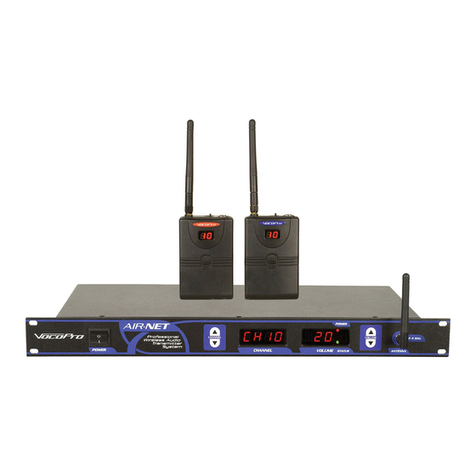
VocoPro
VocoPro 2.4GHz Wireless Audio System AIR-NET owner's manual
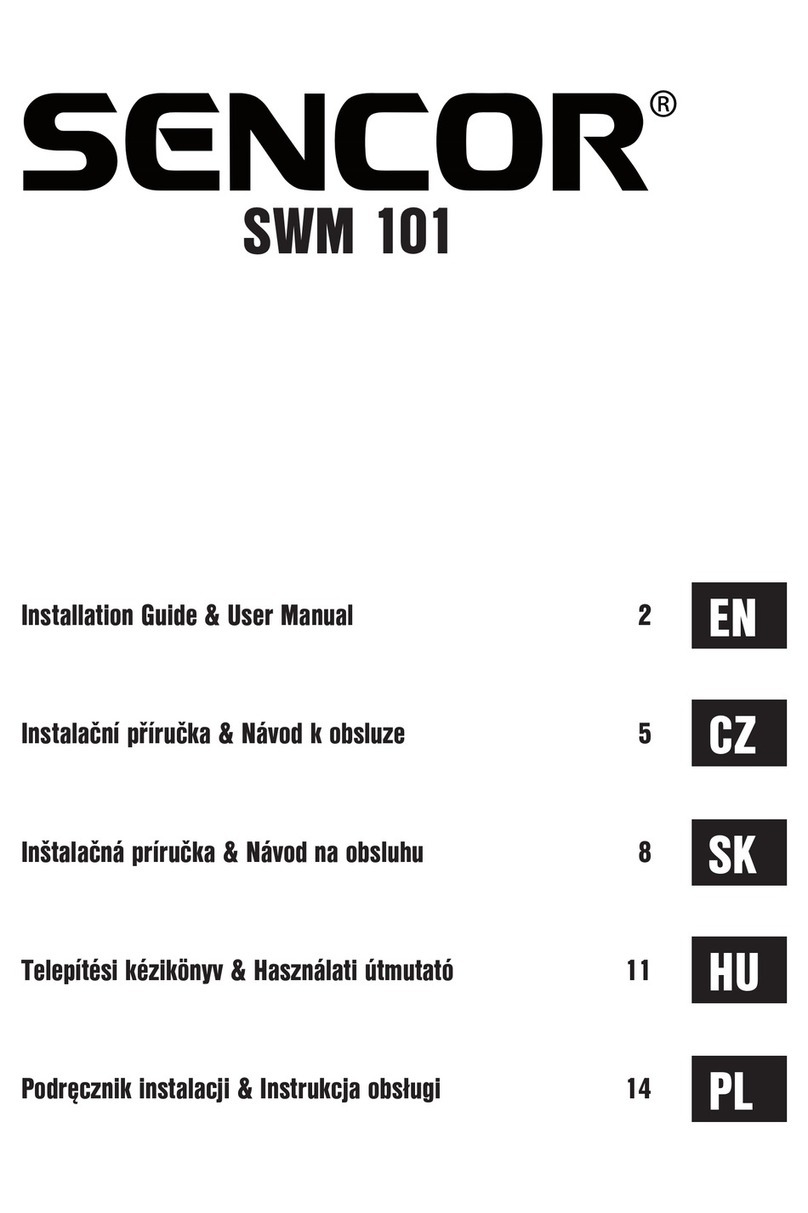
Sencor
Sencor SWM 101 Installation guide & user manual

Panasonic
Panasonic SAAK22 - MINI HES W/CD-PLAYER Service manual

DAEWOO ELECTRONICS
DAEWOO ELECTRONICS AMI-329LW Service manual
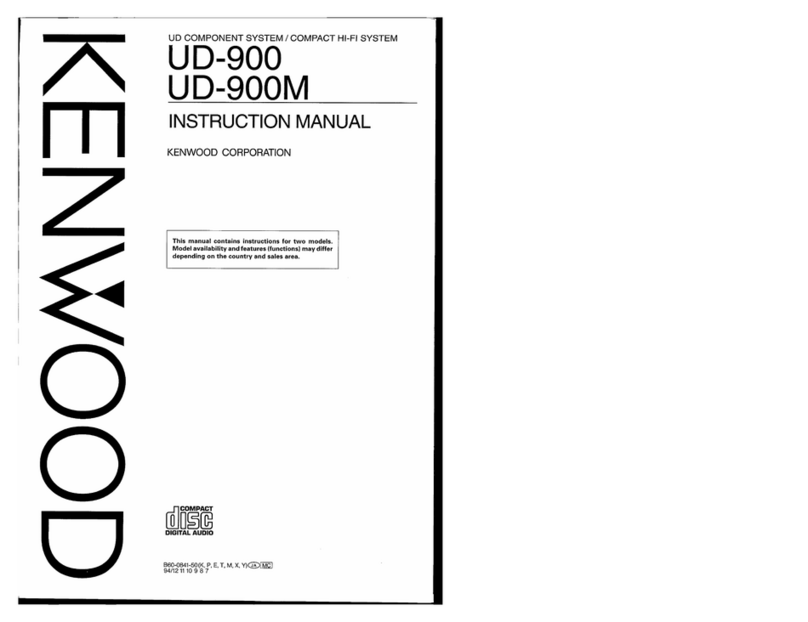
Kenwood
Kenwood UD-900 instruction manual
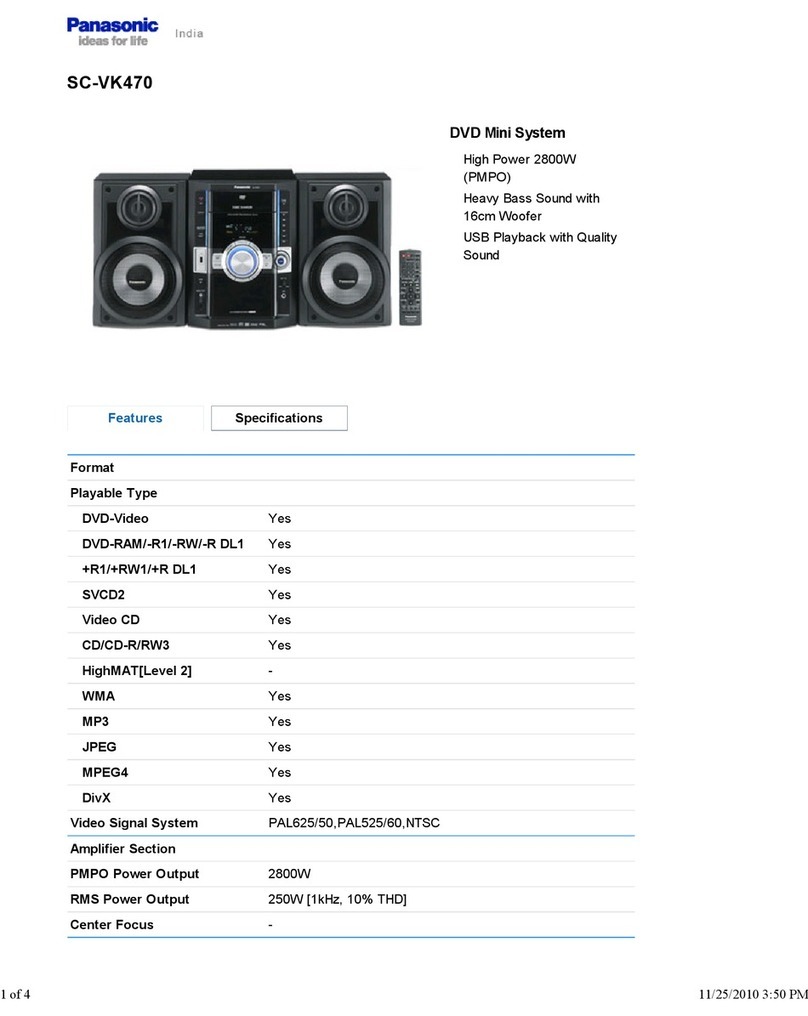
Panasonic
Panasonic SC-VK470 - 5 DISC CHANGER MINI COMPONENT SYSTEM. MULTI FORMAT... Specifications



